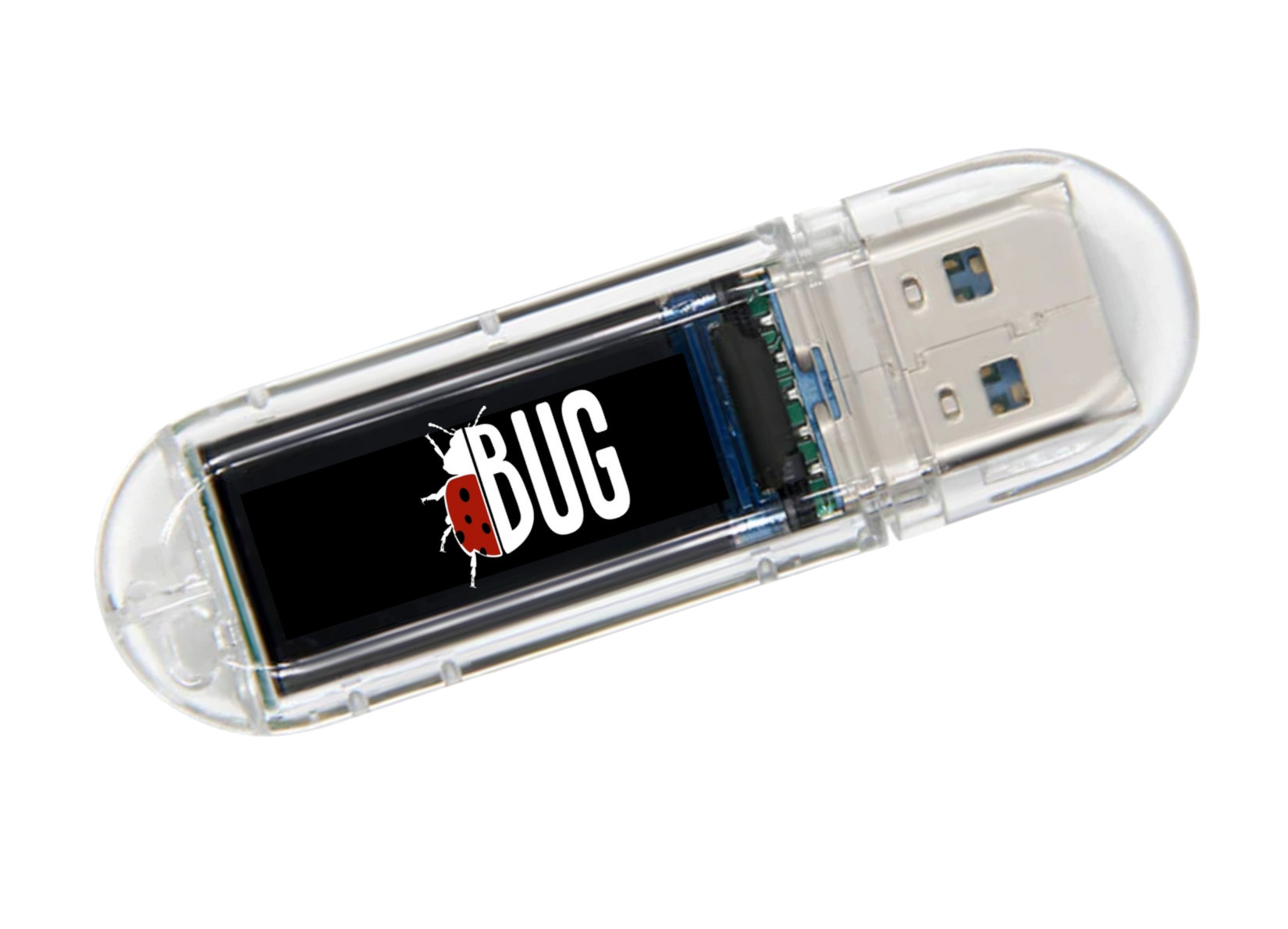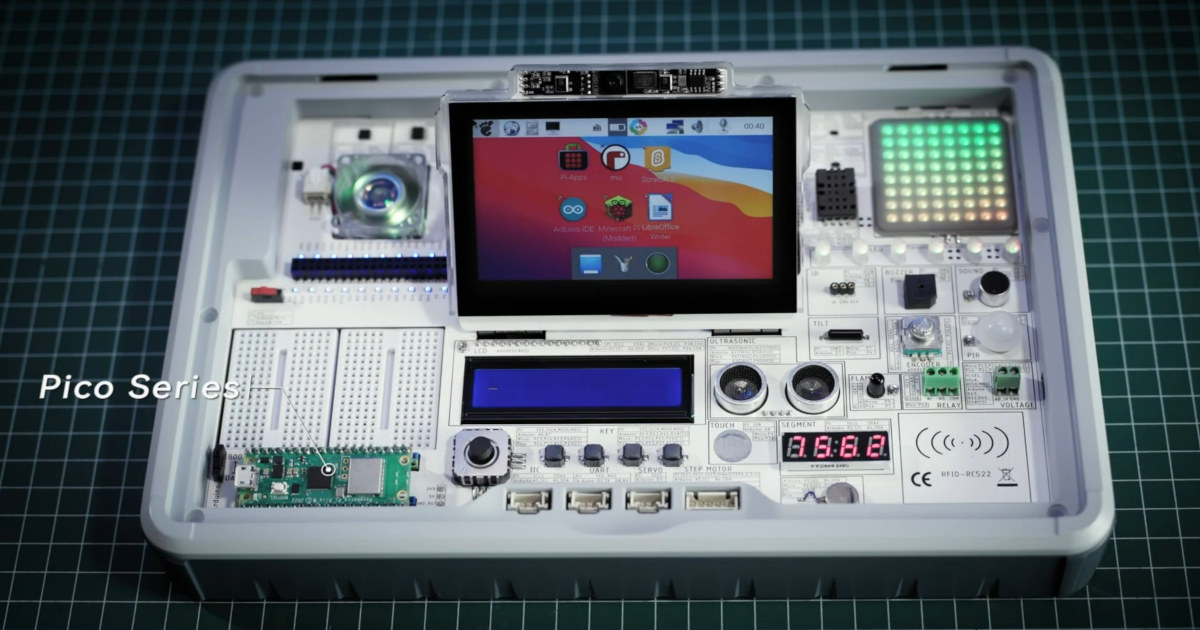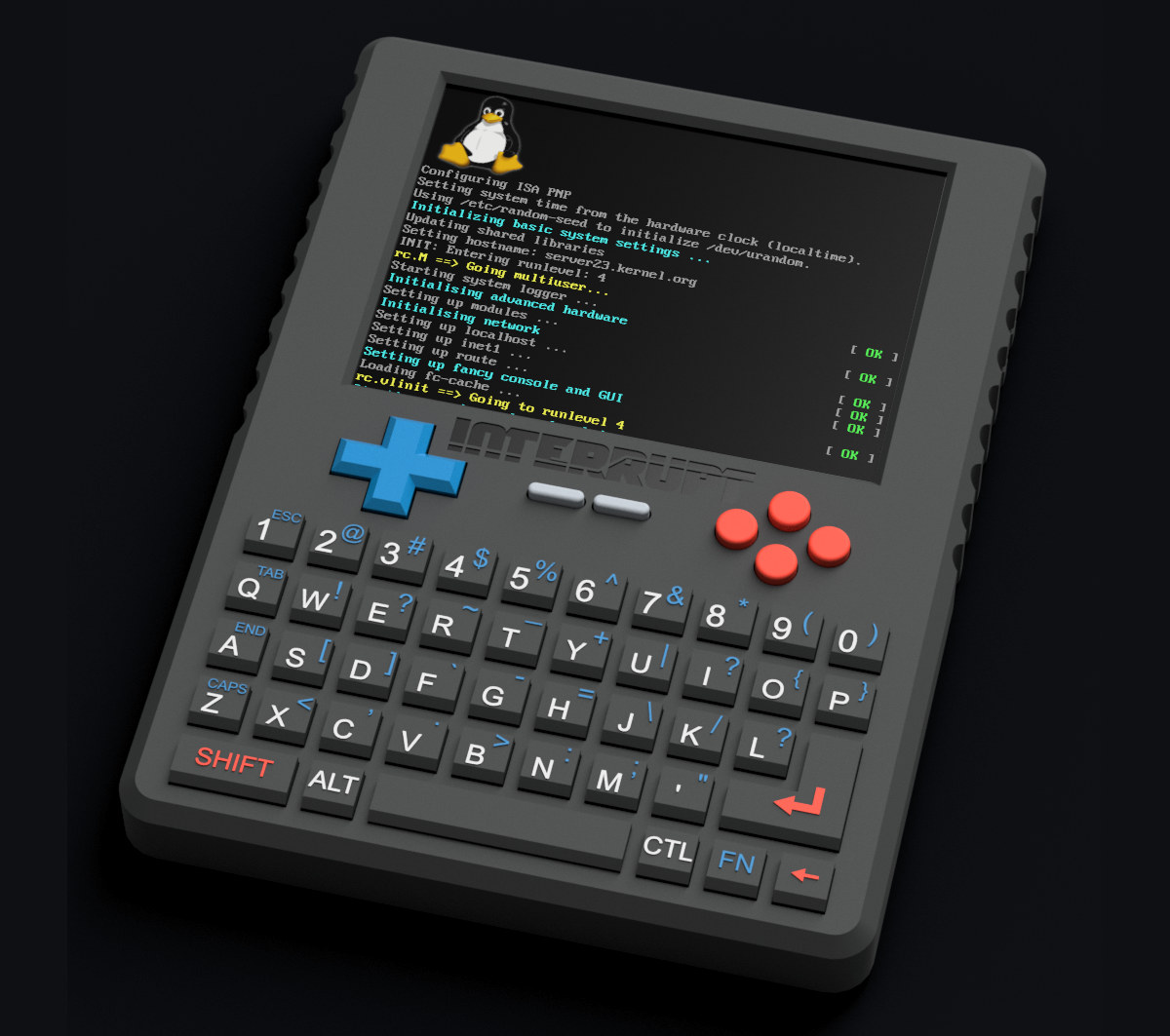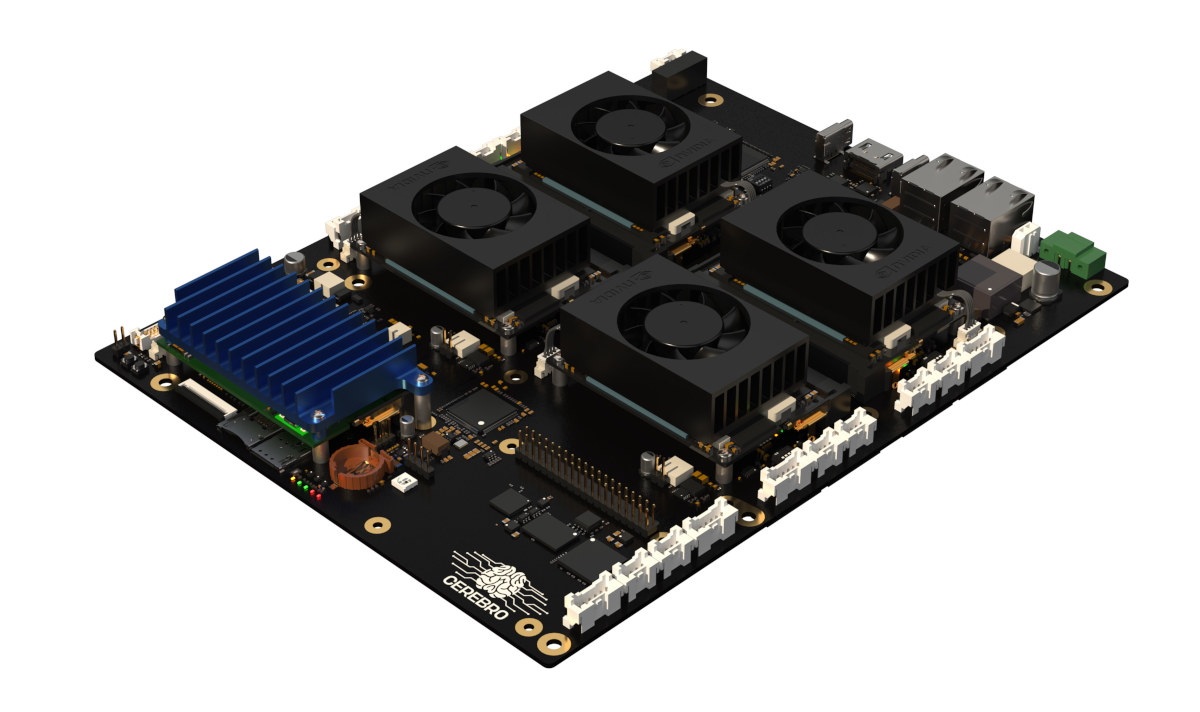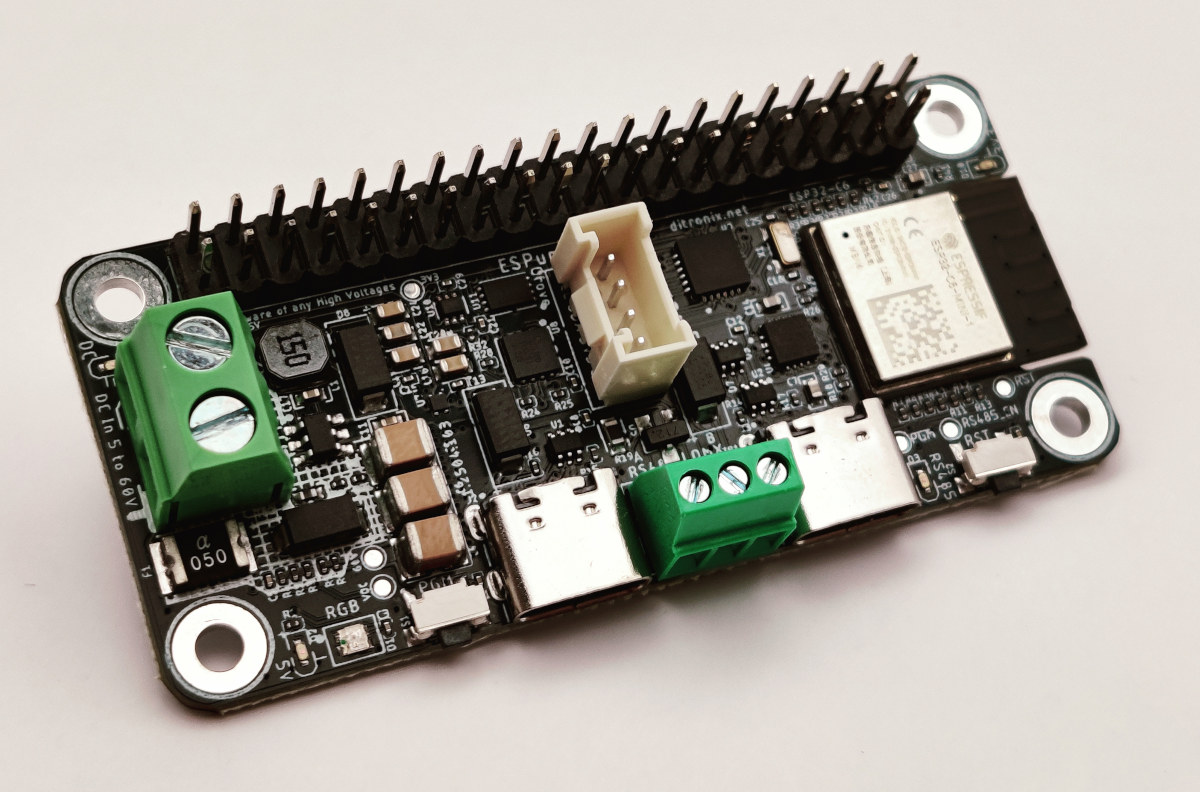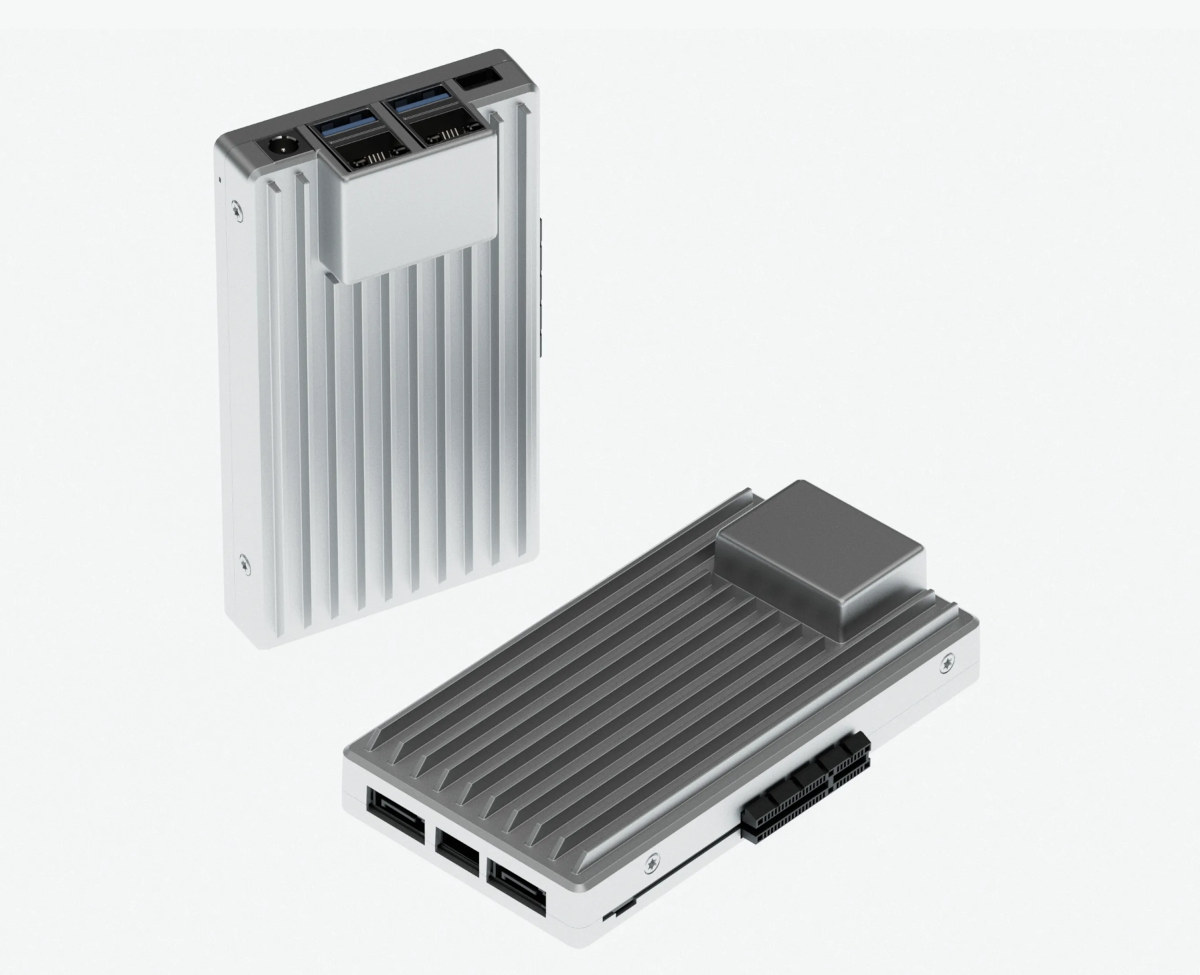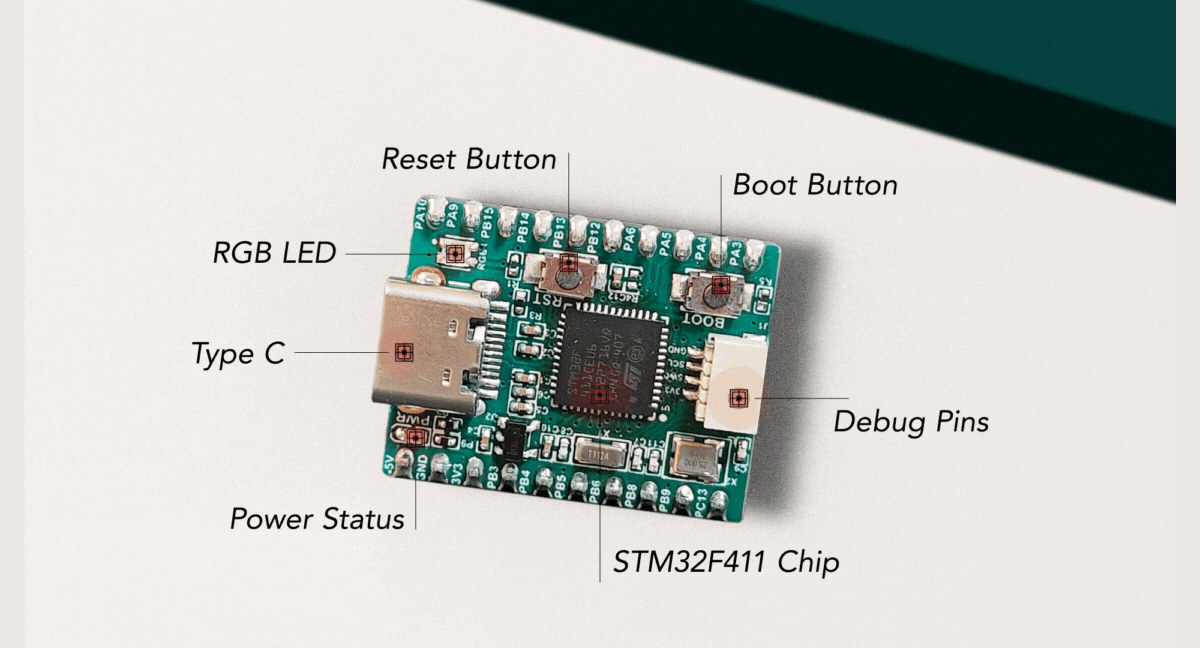Tarun’s BUG is a USB stick with a small display described as an “AI-powered Ethical Hacking Device”, supporting voice control, and offered with either a Raspberry Pi RP2040 dual-core MCU, Espressif Systems ESP32-S3 wireless SoC, or STM32F411 Cortex-M4F microcontroller. The device also features a microSD card for storage, and WiFi and BLE connectivity for the ESP32-S3 version. The BUG is said to offer “cutting-edge HID injection capabilities” (e.g. keyboard/mouse emulation) with wireless control and ChatGPT integration. It is made for ethical hackers, cybersecurity trainers, tech educators, and DIY makers. BUG specifications: Microcontroller (one or the other) Raspberry Pi RP2040 dual-core Cortex-M0+ microcontroller @ up to 133 MHz with 264KB SRAM Espressif ESP32-S3 dual-core LX7 microcontroller @ 240MHz with vector instructions, 512KB SRAM, WiFi 4 and Bluetooth 5.x connectivity STMicro STM32F411 Arm Cortex-M4F MCU @ 100MHz with 512KB Flash, 128KB SRAM Storage – MicroSD card slot inside the USB Type-A port […]
Raspberry Pi 5-based portable AI learning platform features 41 modules, supports Arduino Nano, RPi Pico, and Micro:bit boards (Crowdfunding)
CrowPi 3 is a Raspberry Pi 5-powered all-in-one portable AI learning and development platform with a 4.3-inch touchscreen display, plenty of plug-and-play electronic modules, a breadboard area, and support for Arduino Nano, Raspberry Pi Pico, and BBC Micro:bit MCU boards for expansion. It’s basically another take on the CrowPi 2 laptop based on the Raspberry Pi 4 with similar modules placed under the keyboard, but in a different form factor. The CrowPi 3 portable learning platform replaces the 11.6-inch Full HD display with a 4.3-inch display and does away with the keyboard, but is equipped with a more powerful Raspberry Pi 5 SBC capable of handling real-time AI tools such as ChatGPT and LLaMA (with smaller, distilled models). CrowPi 3 specifications: Main Board – Raspberry Pi 5 SBC Compatible MCU boards Arduino Nano boards BBC Micro:bit boards Raspberry Pi Pico boards Display – 4.3-inch IPS touchscreen display with 800×480 resolution […]
Revopoint Trackit – A high-end optical tracking 3D scanner with marker-free scanning (Sponsored)
Revopoint Trackit is a high-end optical 3D scanner that achieves accurate object tracking for small to large workpieces without needing markers on the object’s surface. This significantly increases scanning efficiency over conventional marker-based 3D scanning systems. The 3D scanner features an optical tracking system ensuring smooth scanning despite complex shapes, angle changes, or position shifts, maintaining stable data acquisition. The scanner offers two scanning modes with a 30-line cross blue laser mode for quick scans and a single-line blue laser mode for capturing narrow, hard-to-reach areas. Both laser modes can deal with dark and shiny surfaces without the need to first apply scanning spray, making it great for capturing delicate workpieces like circuit boards. Other highlights include a wide operating range suitable for small to large pieces (think coins to cars), auto gimbal calibration, and the ability to operate the device as a standalone handheld scanner (with markers). Revopoint Trackit […]
Interrupt – A Linux-based Flipper Zero alternative with WiFi 4, Bluetooth, sub-GHz radios, NFC/RFID reader, IR Tx/Rx (Crowdfunding)
Interrupt is a Raspberry Pi Zero 2 W-based wireless hacking tool that provides a Linux-powered alternative to the popular Flipper Zero with a built-in 3.5-inch touchscreen display and keyboard to easily type commands in the terminal. Besides the WiFI 4 and Bluetooth 4.2 radios from the Raspberry Pi Zero 2 W, the Interrupt also integrates a Texas Instruments CC1001 Sub-GHz wireless MCU working in the 300 to 928 MHz frequency range, an NFC/RFID reader, and an infrared receiver & receiver. The system also provides access to GPIO pins for expansion. Interrupt specifications: Supported SBC – Raspberry Pi Zero 2 W SiP – Raspberry Pi RP3A0 system-in-package with: SoC – Broadcom BCM2710A1 quad-core Arm Cortex-A53 @ 1GHz (overclockable to 1.2 GHz) with VideoCore IV CPU supporting OpenGL ES 1.1, 2.0 graphics Memory – 512MB LPDDR2 Storage – MicroSD card socket Wireless – 2.4GHz IEEE 802.11b/g/n Wi-Fi 4 and Bluetooth 4.2 with […]
Cerebro clusterboard supports up to four NVIDIA Jetson, Raspberry Pi CM4/CM5, or Radxa CM5 modules (Crowdfunding)
Cerebro is a modular board / clusterboard designed to take up to four system-on-modules such as NVIDIA Jetson SO-DIMM modules, Raspberry Pi CM4 or CM5, or Radxa CM5. The board integrated a BMC for intercommunication between the CPU modules. The Cerebro was designed out of frustration as the team at Sparklab Solution could not find a solution where boards would work together seamlessly. While there are other clusterboards for Raspberry Pi Compute modules, the Cerebro motherboard provides more flexibility with three M.2 sockets per node, a built-in BMC and optional expandable BMC, KVM support between each node, dual Ethernet, a 10 Gbps USB 3.2 port, and more. Specifications: Compute Modules 4x SODIMM-260 slots Compatibility Nvidia Jetson Orin NX/Nano Raspberry Pi CM4/CM5 via adapter Radxa CM5 via adapter Supports mix and match of different models Storage 2x M.2 key-M slots per node (8x in total) for NVMe SSD 1x MicroSD card […]
ESPuno Pi Zero ESP32-C6 board takes up to 60V DC input, offers RS-485 interface (Crowdfunding)
ESPuno Pi Zero is a Raspberry Pi Zero-sized board based on an ESP32-C6-MINI-1 WiFI 6, BLE, and 802.15.4 wireless module and an SMPS that allows up to 60V DC input via a 2-pin terminal block. The board also features two USB-C ports, one connected to the ESP32-C6 and the other to a CH343P USB-to-serial chip, a 40-pin GPIO header, a Grove connector, a 3-pin terminal block for RS-485, DMX, Profibus, and a few buttons and LEDs. ESPuno Pi Zero specifications: ESP32-C6-MINI-1-N4 or ESP32-C6-MINI-1U-N4 SoC – Espressif Systems ESP32-C6 single-core 32-bit RISC-V clocked up to 160 MHz 320KB ROM, 512KB SRAM, low-power RISC-V core @ up to 20 MHz CPU Single-core 32-bit RISC-V clocked up to 160 MHz Low-power RISC-V core @ up to 20 MHz Memory/Storage – 320KB ROM, 512KB SRAM Wireless – 2.4 GHz WiFi 6, Bluetooth 5.0, and 802.15.4 radio (for Thread/Zigbee) Storage – 4MB flash Antenna ESP32-C6-MINI-1-N4 […]
Zimaboard 2 – An Intel N150 micro server and mini PC with dual SATA, dual 2.5GbE, PCIe slot, miniDP (Crowdfunding)
ZimaBoard 2 is a compact Intel Processor N150 “Twin Lake” mini PC and micro server with two 2.5Gbps Ethernet ports, two SATA ports, two USB 3.1 ports, and a 4K-capable miniDP video output. It built upon the company’s ZimaBoard introduced in 2021 with an Apollo Lake processor, but offers a much faster Intel N150 CPU, LPDDR5x memory, 2.5GbE networking instead of gigabit Ethernet, and a PCIe Gen 3.0 x4 slot as opposed to a PCIe Gen 2.0 x4 slot. Two variants are offered: one with 8GB RAM and 32GB eMMC flash and the other in a 16GB/64GB configuration. Zimaboard 2 specifications: SoC – Intel Processor N150 quad-core “Twin Lake” processor @ up to 3.6 GHz (Turbo) with 6MB cache, 24EU Intel UHD graphics @ 1000 MHz; PBP: 6W (but set to 10W here) System Memory and Storage ZimaBoard 2 832 – 8GB LPDDR5X 4800MHz; 32GB eMMC flash ZimaBoard 2 1664 […]
Xero MCU is a compact USB-C board based on STM32F411 microcontroller (Crowdfunding)
Xero MCU is a small STMicro STM32F411 Arm Cortex-M4F microcontroller board with a USB-C port, twenty through and castellated holes for GPIOs, a Debug connector, Reset and Boot buttons, and a few LEDs. The 100 MHz MCU embeds 512KB flash and 128KB SRAM, and the board is said to be designed for hobbyists, students, and professionals. For reference, the Xero MCU board features the same STM32F411CEU6 microcontroller found in the Black Bill board. However, it’s quite shorter at about half the size, and features castellated edges, making it suitable for soldering on a baseboard. Xero MCU specifications: Microcontroller – STMicro STM32F411CEU6 Arm Cortex-M4F MCU @ 100MHz with 512KB Flash, 128KB SRAM USB – 1x USB Type-C port for power and programming Expansion – 2x 20-pin through and castelled holes with up to 17x GPIO, I2C, 2x SPI, 2x UART, 4x ADC, 5V, 3.3V, and GND Debugging – 4-pin debug connector […]


